Award Holder: Stanley Jachike Onyemechalu
University: University of Cambridge
Title of Research: Heritage and the legacies of violent conflict: The Biafra war (1967-1970) and present-day Igboland, Nigeria
Introduction
My Ph.D. research set out to explore the complex relationship between cultural heritage and the legacies of violent conflicts with focus on the Igbo people in the context of the Nigeria-Biafra war (1967-1970). My study aimed to investigate the destructive and ‘regenerative’ impacts of the war on the cultural heritage of the Igbo in south-eastern Nigeria. Additionally, it aimed to explore the legacies of the war, the memorialization of the war and assess the role of intangible (as opposed to tangible) heritage in the survival and recovery of the post-civil war Igbo people. ‘Regenerative’ impact refers to how violent conflict and its legacies cause the creation/reinforcement of cultural heritage or become heritage themselves.
Nigeria’s civil war or the Nigeria-Biafra war, occurring shortly after Nigeria’s independence from the British Empire, was one of the largest armed conflicts that marked the early years of Africa’s post-colonial era. Arising from the now-defunct eastern region’s quest for secession from the Nigerian state, the war stretched over thirty months between 1967 to 1970. While research in the conflict-heritage discourse have been ongoing in recent years, much remains to be done in understanding the complex relationship between cultural heritage and the legacies of violent conflicts in post-conflict societies and woefully little has focused on African case studies. Initial data gathered during the pilot phase of my fieldwork suggest that the Nigeria-Biafra war had impacted the cultural heritage of the Igbo – including tangible and intangible cultural heritage – in diverse ways. The data showed that while the war destroyed or disrupted some aspects of the Igbo cultural heritage, a few other aspects were regenerated or transformed. This research grant, therefore, enabled me to conduct a comprehensive fieldwork research, where I visited several communities and sites to form a more concrete understanding of how the Nigeria-Biafra war transformed the cultural heritage of the Igbo people in Nigeria.
It is now 54 years since the Nigeria-Biafra War ended in 1970. Bearing in mind Nigeria’s average life expectancy of 53 years (World Bank, 2020), it was expedient to garner the experiences of war veterans and survivors while still alive. Also, the recent agitations for secession in parts of Nigeria show that if unaddressed, the legacies of the previous civil war may soon lead to another one. Hence, this research could not be more urgent.
Data Collection Process
To effectively achieve my research objectives, I adopted a broad methodological approach that is typical to Heritage Studies (see Sørensen & Carman, 2009), which is largely qualitative, combining ethnographic, documentary and archival methods. I employed a multi-sited case study that focused on the Nigeria-Biafra War, which then allowed me to use comparative methods across several distinct types of heritage sites related to the conflict. The sites for my research included Umuahia in Abia State, Amorka in Anambra State, Afikpo in Ebonyi State, Nsukka in Enugu State, and Oguta in Imo State (see figure1). These communities were chosen primarily because they witnessed significant combats/bombardments during the war and contained significant data from the period related to the research. Data collection included unstructured interviews, focus-group discussions, personal observations/site visitations, narrative art, as well as documentary (including media) and archival sources. Key interviewees included war survivors (civilians and military veterans) and/or their descendants, women groups, traditional custodians, indigenes, residents and heritage professionals. I also conducted several public engagement events, including an exhibition, in the study area to provide feedback and to understand the intergenerational memory/knowledge transfer of the war.


Figure 1: The five states in south-eastern Nigeria (Onyemechalu & Ugwuanyi, 2021)
Another major component of my fieldwork was to visit and interview staff at the National War Museum (NWM) in Umuahia, Abia State, as well as the Centre for Memories (CFM), and the National Archives for south-eastern Nigeria both in Enugu state. The NWM holds the largest collection of artefacts from the Nigeria-Biafra war, while CFM is a youth-run not-for-profit organization dedicated to the promotion of Igbo memorable events through temporal and permanent exhibitions. The National Archives in Enugu holds the largest archival records, including photos and newspaper reports, on Nigeria’s south-eastern region – the main theatre of the civil war. A final component was the narrative art competition for young people (age 16–35), where they were asked to make artistic representations of their knowledge of the Nigeria-Biafra war. This activity, which formed part of the public engagement activities for my research, shed light on the inter-generational knowledge/memory transfer of the war in Igboland. Taken together, these methods helped me to shed light on the complex relationship between cultural heritage and the legacies of violent conflict in the context of the Nigeria-Biafra war.
(Im)material Legacies of Nigeria’s civil war in its southeastern region: Some Findings.
During my fieldwork, I visited nine communities across the five south-eastern states in Igboland, Nigeria. Notable among them were Umuahia in Abia, Amorka in Anambra, Afikpo in Ebonyi, Enugu-Ezike in Enugu and Oguta in Imo States. Umuahia was one of the capitals of the young Biafra Republic and hosts several sites related to the Biafra war, including a tree cave, a wartime temple, and the National War Museum (NWM) (see figure 2). Amorka hosts the wartime ‘Biafra Airstrip’ and a war-time bunker, while Afikpo hosts a site of massacre from the war period. Enugu-Ezike was one of the first communities to fall to the Nigerian forces and hosts the famous Ojile dance with roots traced to the war. Oguta hosts several sites related to the Biafra war, including the famous ‘Oguta boy’ – a Nigerian gunboat that was sunk by the Biafran forces and has remained ‘sinking’ ever since (see figure 3). There is also an underground bunker on the shore of the Oguta River said to be bult by Biafran engineers during the war, but which has now been cordoned off by the Nigerian Navy due to security issues posed by resurgent neo-Biafran groups in the area, particularly the Indigenous Peoples of Biafra (IPOB).


Figure 2: National War Museum, Umuahia in Abia State (S. Onyemechalu, 2023).

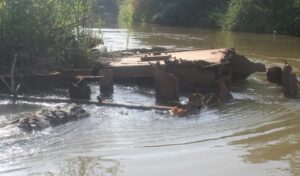
Figure 3: The ‘sinking’ gunboat in Oguta, Imo State (S. Onyemechalu, 2024).
In addition to visiting these sites, I also conducted interviews to understand the people’s relationships with those seemingly abandoned yet historic/memorial sites today. For example, I observed that there is a long-standing strong narrative surrounding the ‘sinking’ gun boat in Oguta, which credited the success of the Biafran forces in the battle for Oguta to some spiritual beings connected to the river. This revealed another intangible heritage aspect of my research, where myths and religious beliefs are transformed or diminished by the legacies of violent conflicts. In Afikpo, I discovered a sacred space where the respondents claim was the site of a massacre which happened during the last days of the war. I video-documented the Ojile dance (see figure 4) and conducted interviews to understand the songs, costumes/designs, symbolism and connections with the Nigeria-Biafra war. I then paid for two dance regalia (male and female) to be made to form part of an exhibition on the legacies of the Biafra war that I co-planned with the Centre for Memories in Enugu.

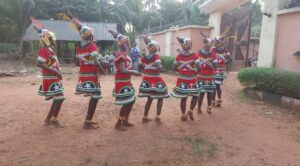
Figure 4: Ojile dancers in Enugu-Ezike, Enugu State (S. Onyemechalu, 2023).
Also, while revisiting Enugu State I found out about and collected data on the Rangers International Football Club, which was formed in the immediate aftermath of the war and which has continued to project/preserve the memory of the Biafra war for many elderly people. Many aspects of the club and its history, including the fan songs are all entangled in the Biafra war history. Of particular interest is the name of the club, ‘Rangers’, which referenced a dreaded section of the Biafran army that went by the same name and was known for operating behind enemy lines. Additionally, I documented about ‘Abacha’ – a food made from a Cassava – which sustained many people during the war, especially people who could not make their way to a refugee camp. I interviewed many people, especially women, who recalled how they felt when they first had to process and eat this meal during the war – albeit with little or no vegetables, fish or meat.
At all these locations, interviews were conducted, geographical and pictorial information were also collected. These and more provide primary evidence for the destructive and regenerative impacts of the Nigeria-Biafra war on Igbo (intangible) heritage, which is the concise aim of my PhD research.
Post-Data Collection Feedback & Public Engagement
As part of my research, I developed the Legacies of Biafra Heritage Project (LBHP) and collaborated with the Centre for Memories (CFM) in Enugu for a series of public engagement activities, including a narrative art contest, intergenerational dialogue and a temporary exhibition.
Narrative Art Contest: After months of planning, including a baseline survey and managing invitations/registrations, we held a Narrative Art Contest that involved young people (16-35 years old) in an artistic representation (painting, poetry and short essays) of their knowledge on the Biafra war and its legacies. We received about 77 attendees, out of which 35 young participants registered for the art contest across the three art categories. At the end of the day, we got 17 paintings, 10 poetry and 5 short story submissions (see figure 5).
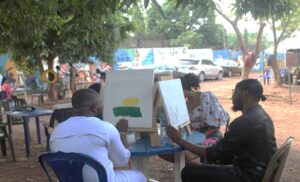

Figure 5: The LBHP Narrative Art Contest in session (S. Onyemechalu, 2024).
Intergenerational dialogue: The next day, we held an interactive session between the Narrative Art contest participants from Day 1 and some Biafra war survivors/veterans, where these artistic expressions were presented and discussed (see figure 6). On the one hand, the young participants got an opportunity – the first time for many of them – to listen to the experience of the war survivors firsthand. On the other hand, the war survivors got a chance to discuss their war experience with and admonish the younger generation.
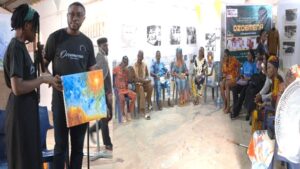

Figure 6: An intergenerational dialogue using artworks from the contest (S. Onyemechalu, 2024).
Exhibition: Due to the massive interest that we received from the public after our two-day event, we decided to add a third day to allow us plan and launch an exhibition of the results of the narrative art contest to a wider audience. Planning for this involved curating the art submissions, scripting the exhibition as well as designing and printing labels to be tagged to the paintings and printing the essays and short stories for public consumption. On May 28, 2024 – as part of activities to commemorate the May 30th declaration of the Biafran Republic in 1967 – we launched a public exhibition titled ‘Dancing Memories’, where we presented the results from our Narrative Art Contest, among other activities, including a live dance performance by the Ojile dance group, and another intergenerational dialogue on the Biafra war and its legacies (see figure 7a-b). This event was well attended by school students, youths, war survivors and the media.
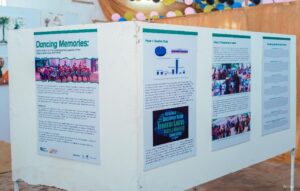



Figure 7a-b: The ‘Dancing Memories’ Exhibition at CFM, Enugu State. (S. Onyemechalu, 2024).
Fieldwork Challenges
There were pockets of violence around Nigeria but particularly in the southeast region (my study area). This heightened insecurity was to a great deal suspected to be connected to the activities of neo-Biafran militant groups – especially IPOB – in protest of the continued detention of their leader, Mr. Nnamdi Kanu. This caused some delays and I took extra care to plan and accomplish interviews/field site visits in certain locations. Moreso, the issue of ‘unknown gunmen’, a name generated by the media and often linked to neo-Biafra militants, had deepened suspicions among residents in Nigeria’s southeastern region so that to even utter the word ‘Biafra’ or ask questions about it became risky in certain spaces, especially in Oguta and Abakaliki. My visitation to both communities was made possible only after many months of planning and monitoring local security reports. Finally, there were the ‘sit-at-home’ mandates – a form of protest introduced by IPOB supporters in the southeastern region, which required everyone to stay home for an entire day, especially on Mondays. This meant I was often unable to do any travels, interviews or field visits on Mondays as well as on other days declared as ‘sit-at-home’. It also meant that I only had four-day work weeks, which I managed as efficiently as possible.
Contribution to Anthropology
There are significant gaps in understanding the regenerative impacts of conflict on heritage as well as the relationship between cultural heritage and legacies of violence from late-20th century conflicts in Africa, many examples of which were civil wars. My study will fill these gaps with focus on intangible heritage, on which there is little research. The bulk of anthropological literature on the conflict-heritage debate centre more around the destructive impacts of conflict on tangible heritage (archaeological sites, monuments, etc.) than on intangible heritage (music, food, etc.). Woefully little has been done to understand how heritage can be used to ‘repair’ the legacies of conflict, or the ‘regenerative’ impacts of conflict on heritage. ‘Regenerative’ impacts refer to how conflict and its legacies cause the creation/reinforcement of heritage or become heritage themselves. Combining extensive ethnographic research (including semi-structured interviews & focus-groups), archival/historical research and field survey, my project advances the foregoing anthropological debates by exploring the complex intersection of cultural heritage and the legacies of violent conflicts in the context of the Nigeria-Biafra war (1967-1970) in present-day Igboland, south-eastern Nigeria. This research broadens the anthropological literature on conflict-heritage and provides evidence for the potentials of heritage in (post-)conflict interventions in affected communities, including identity (re)formation, memorialisation, resilience/survival and peacebuilding.

